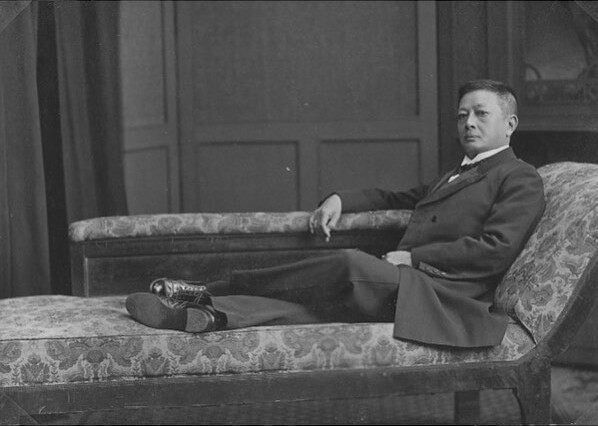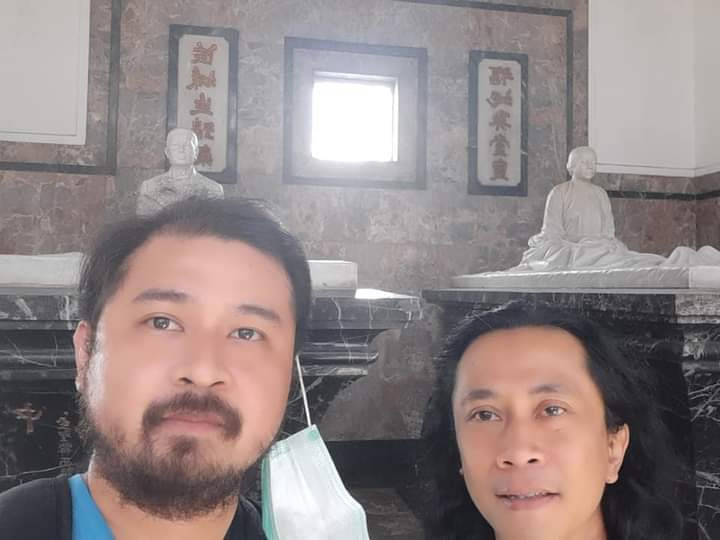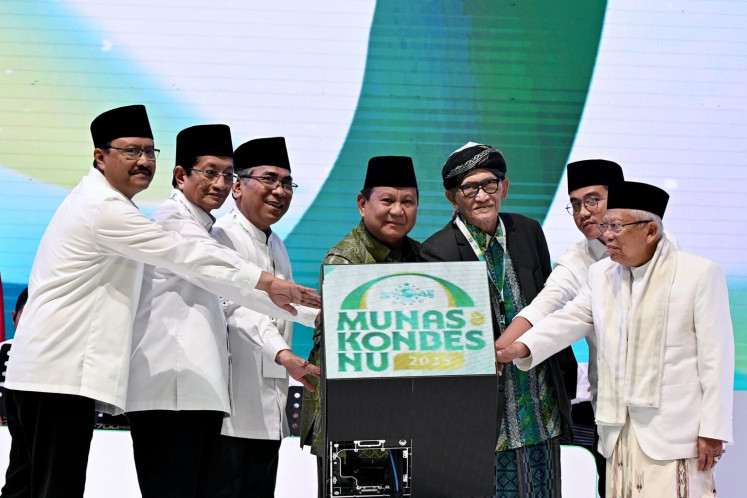Popular Reads
Top Results
Can't find what you're looking for?
View all search resultsPopular Reads
Top Results
Can't find what you're looking for?
View all search resultsUnderstanding Chinese heritage through tomb exploration
Change text size
Gift Premium Articles
to Anyone
A community explores ancient Chinese tombs to further delve into Indonesia’s Chinese history.
Some people may find it frightening to explore tombs; but for others, doing so can be a way to reconnect with the Chinese civilizations that have long since gone. In Indonesia, Chinese culture holds a long history, dating back to the 13th century. They mainly moved as sojourners wishing to return to their mainland after retirement or old age, but some stayed as migrants.
Philipus Dellian Agus Raharjo, also known as Pippo, and Bram Luska, another Semarang, Central Java resident, spent three days a week searching for Chinese tombs. Both began exploring the Chinese tombs in Semarang approximately three years ago through a map from the colonial era that tracked the locations of various graveyards.
“There are many undiscovered histories of Chinese [ancient] cultures in Indonesia, and I want to uncover that,” Pippo said, and, lucky for him, he can read a bit in Japanese; it enabled him to at least understand some hanzi (Chinese characters) from the tomb he found as it similar to kanji.
Leo Suryadinata, a Singapore-based sinologist, explained the main reason why Chinese histories were not recorded in Indonesia is that Indonesian Chinese was not mentioned in any school textbook or Indonesian history books, as if they were separate from Indonesia.
“More Chinese-Indonesians should continue to conduct serious studies on their communities and history, if possible, along with their ‘indigenous’ Indonesian counterparts to generate the works,” Leo said.
By far, they have discovered over 100 tombs around the capital of Central Java, discovering gravestones from various dynasties, including the oldest ones from the 1700s.
Visiting Thio Sing Liong’s tomb was one of Pippos’s most notable achievements. It inspired him to further the tomb exploration with Bram; evidence suggested Sing Liong was an exporter and importer in addition to his real estate fortune. Unlike other tombs, Sing Liong’s tomb and marble sculpture were well preserved by his family in a mausoleum form.
Pradani Ratna, also known as Dani, 37 years old, living in Jakarta, was one of Sing Liong’s great-great-granddaughters. She said her mother, Mestika Hardjanegara, preserved much of the family’s history by recollecting many photographs.
Admiration: Reyhan learns more about Chinese culture, such as feng shui and the shape of its tombstones. (Courtesy of Reyhan Biadilla) (Archive/Courtesy of Reyhan Biadilla)The costume designer spoke about how she was able to record the plight of Chinese communities in Indonesia by preserving her family’s history.
“Because we can learn more than just their names and dates, we may also gain insight into their circumstances; after all, we all have family histories, right?” Dani said in a video call interview.
Growing interest
Currently, tomb exploration has been gaining popularity in Indonesia. On social media, an account named Indonesia_Graveyard has over 8,000 followers.
In the capital city of Indonesia, 39-year-old Reyhan Biadilla, a technician, has been exploring various ancient cemeteries, including Chinese tombs, for the last 19 years. Reyhan started his hobby as a history student at Sunan Kalijaga State Islamic University Yogyakarta in 2004 before residing in Jakarta in 2010. Ever since he returned to his hometown, he has continued with his hobby at least once a month.
“If I do it once a week, people would think I was the key master of the tombs,” Reyhan jokes.
Usually, when exploring the Chinese tombs, Reyhan would visit the area of Tanah Kusir, Kebon Nanas and Menteng Pulo, among many others. However, he further noted that in Jakarta, the topography of the historical area drastically changed over time. The changes were mainly due to the fast-growing infrastructure and population (according to the data, there are 11,075,000 individuals living in Jakarta).
Pippo and Bram typically explored the area of Tandang, Sendangguwo, Bergota and Simongan, among many smaller districts close to Semarang.
However, mausoleums were generally more well-conserved than other Chinese tombs because they were built for people of higher social and economic status.
To determine the origin of the gravestone and the name of the person buried down there, Reyhan brought along his Mandarin-speaking friends to translate pinyin.
Typically, on Chinese tombstones, the name of the emperor and the year of his tenure would be engraved on the tombstone to identify the death date by the imperial dating system commonly carved in ancient Chinese cemeteries. However, along with the Christian influence, the tomb typography also evolved, with some no longer enclosing the dynasty.
Admiring history
Pippo, Bram and Reyhan have been performing tomb exploration to learn more about ancient Chinese heritage in Indonesia. They found out Chinese histories needed to be given the attention they deserved.
Both discovered many headstones no longer served their original purpose of marking burials. Pippo and Bram often found tombstones from the Qing dynasty used as drain covers in the more residential areas of Semarang. Even worse, some of the cemeteries were repurposed into new neighborhoods for the residential areas.
“The rate of progress and the availability of land determines the outcome. The locals have decided their tombs and surrounding land are no longer sacrosanct and can be developed,” Reyhan said.
Moreover, Reyhan continued, in the past, there was no regulation on protecting cultural heritage in Indonesia. The country’s law on safeguarding cultural heritage was initially introduced in 1992.
The eviction destroyed Bram’s family tomb. Sendangguwo, where his ancestors were buried, was now a neighborhood residence. However, that unfortunate event encouraged him to care for the remaining tomb in Semarang.
Looking for history: Tomb exploration is something Philipus (right) and Bram are doing to learn more about Chinese heritage in Indonesia. (Courtesy of Philipus Dellian Agus Raharjo) (Archive/Courtesy of Philipus Dellian Agus Raharjo)“I think it’s a way of giving back to our ancestors. Without them, I’m not going to be here, and doing this [tomb exploration] shows my devotion,” Bram, who also works as a restauranteur, said.
Febriyanti Suryaningsih, executive director at the Center for Architecture Documentation (PDA, Pusat Dokumentasi Arsitektur), shared several aspects of a site or building categorized as cultural heritage. For example, the carving, inscription or cupola of the tomb (and their dates), the layout of the tomb (and whether exhibiting any bias toward particular philosophies or beliefs), the historical event to which it was linked and whether or not the buried person was acknowledged to hold a prominent position in society or the community.
Regrettably, many of Indonesia’s cemeteries and other cultural heritage sites were far from maintained in recent decades because tombs and other historical monuments were not classified under Indonesian legislation governing spatial and urban development. As a result, it was also challenging to keep track of all the historical sites because many are scattered across large areas or in residential neighborhoods.
“It’s even more challenging to preserve the historical sites when the family is not even around anymore,” Febriyanti said.
Febriyanti further added that her efforts progressed by extending an invitation to other communities to assist in preserving cultural artefacts whenever possible. She said many cultural and historical items needed to be protected through the work of local communities. She also thanked those working to preserve the ancient tombs through their creative storytelling.
“It means that citizen efforts to protect it [historical sites] are just as important as government ones,” she said.
Connecting families
Pippo shared the most incredible experience was reconnecting family members with their forebears. He emphasized this was the most rewarding aspect.
Bram recalled in 2021, he discovered a tombstone from a Goei family in Simongan, Central Java. The tomb was evicted and became part of a residential house. With the social media presence, such findings enabled them to help Goei’s family, relocating to Denmark, reconnect with their ancestors.
“They were very proud of knowing their ancestor was an officer der Chinezen [a high-ranking government position in the civil administration of the colonial era],” Bram added.
Another unforgettable memory of Pippo and Bram while exploring the Chinese tombs was when they were almost led through their “dream” by the deceased in 2021 while navigating a historical tomb of a Chinese family in Kelengan, Central Java.
“In my dream, I was traveling along a mountainside when I came to a gate adorned with hanzi characters. Inside, I discovered a tomb,” Bram said while recalling the “dream” he had while looking for the Chinese tomb.
“We were riding with Bram, where he directed through his feelings; it was Sien Phoh’s tomb,” Pippo said; he further noted Sien Phoh’s tomb was dated back to 1715.
Regardless, both shared the efforts of exploring the Chinese tomb in Central Java made them feel content.
“It’s truly fulfilling because I could explore Chinese history that hasn’t been known before,” Pippo said.













